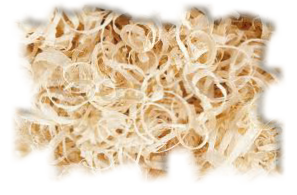
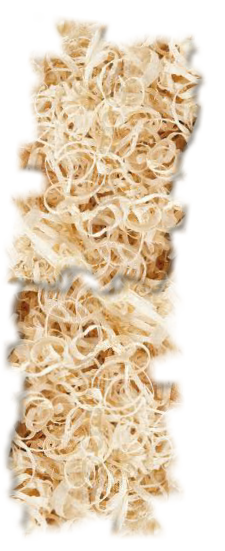
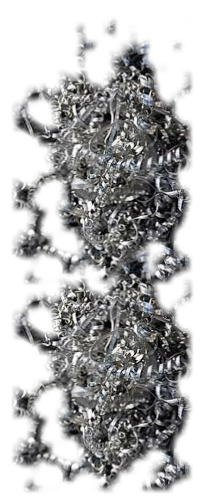
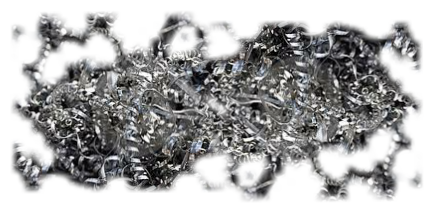






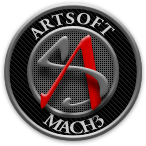





This can be quite a debate so here is some info. Read it with an open mind and then decide which is best for your application. On this build we are using 300oz steppers.
Steppers and Servos...
Thanks to NC Cams for compiling the following info:
Everything you wanted to know
and more about steppers and servos as put forth in a reply from Mariss Freimanis
to Freak Brain on another post. I've found this to be a definitive reply that addresses
the recurring "stepper versus servo"
Step motors and servo motors service similar applications, ones where precise positioning
and speed are required.
The biggest difference is that steppers are operated "open
loop". This means there is no feedback required from the motor. You send a step pulse
to the drive and take on faith it will be executed. Seems like a problem but it's
not.
If you have a quartz watch with hour and minute hands, then you have a step motor
on your wrist. The electronics generates 1 step pulse per second, driving a 60 step
per revolution motor which turns at 1 RPM. It keeps nearly perfect time. Any errors
are due entirely to the electronics timing accuracy (quartz crystal oscillator).
With
apologies to David Letterman, here's some "Top 10" lists I came up with for choosing
between steppers and brush DC servos. Others can add more, I'm sure.
Top Ten Stepper
Advantages:
1) Stable. Can drive a wide range of frictional and inertial loads.
2)
Needs no feedback. The motor is also the position transducer.
3) Inexpensive relative
to other motion control systems.
4) Standardized frame size and performance.
5) Plug
and play. Easy to setup and use.
6) Safe. If anything breaks, the motor stops.
7) Long
life. Bearings are the only wear-
8) Excellent low speed torque. Can
drive many loads without gearing.
9) Excellent repeatability. Returns to the same
location accurately.
10) Overload safe. Motor cannot be damaged by mechanical overload.
Top
Ten DC Servo Advantages:
1) High output power relative to motor size and weight.
2)
Encoder determines accuracy and resolution.
3) High efficiency. Can approach 90% at
light loads.
4) High torque to inertia ratio. Can rapidly accelerate loads.
5) Has
"reserve" power. 2-
6) Has "reserve" torque.
5-
7) Motor stays cool. Current draw proportional
to load.
8) Usable high speed torque. Maintains rated torque to 90% of NL RPM
9) Audibly
quiet at high speeds.
10) Resonance and vibration free operation.
Top Ten Stepper Disadvantages:
1)
Low efficiency. Motor draws substantial power regardless of load.
2) Torque drops
rapidly with speed (torque is the inverse of speed).
3) Low accuracy. 1:200 at full
load, 1:2000 at light loads.
4) Prone to resonance. Requires micro-
5) No feedback to indicate missed steps.
6) Low torque to inertia ratio.
Cannot accelerate loads very rapidly.
7) Motor gets very hot in high performance configurations.
8)
Motor will not "pick up" after momentary overload.
9) Motor is audibly very noisy
at moderate to high speeds.
10) Low output power for size and weight.
Top Ten DC Servo
(brush type) Disadvantages (besides higher relative cost):
1) Requires "tuning" to
stabilize feedback loop.
2) Motor "runs away" when something breaks. Safety circuits
required.
3) Complex. Requires encoder.
4) Brush wear limits life to 2,000 hrs. Service
is then required.
5) Peak torque is limited to a 1% duty cycle.
6) Motor can be damaged
by sustained overload.
7) Bewildering choice of motors, encoders, servo drives.
8)
Power supply current 10 times average to use peak torque. See (5).
9) Motor develops
peak power at higher speeds. Gearing often required.
10) Poor motor cooling. Ventilated
motors are easily contaminated.
Mariss
Subsequently another question was posed by Freak
Brain:
One question....
On the Top Ten DC Servo Disadvantages you wrote, Requires "tuning"
to stabilize feedback loop. Is this done in the drive or is this done in the encoder?
and the safety circuits, are these in the drive or is this something I would have
to buy separately. Like your drives, are these items in your drives?
Mariss’ reply
to this inquiry:
Tuning refers to adjusting the PID coefficients to cause a critically
damped response from the motor/load when adjusting to a disturbance. Sounds complicated
but it's not.
PID stands for Proportional, Integral and Differential. The "difference"
error (where you should be versus where you are) is separated into 3 channels (PID),
then recombined. You perform this algorithm unconsciously when you drive a car.
Say
you take a road trip from LA to San Francisco up I-
At the start of the trip, both of you are stopped.
The "command car" instantly accelerates to 85MPH (average to slow for what you see
on I-
The first thing you notice is a lot of distance has opened up between you
and the "command car". This is the Proportional component. You press on the gas and
away we go. Your speed builds up and after a while the distance begins to close.
Your
rate of closure is the derivative or Differential component. As long as the distance
to the "command car' keeps opening, you press harder on the gas. As it closes, you
ease up.
To close the distance, you have to go faster than the "command car". Otherwise
you will never catch up.
You are now getting very near the "command car". Both the
separating distance and the rate of closure decreases towards zero so they are no
longer of use. You have come off of the gas enough to nearly match its speed.
This
is where the Integral component comes in. You are now side by side. You now adjust
your speed based on inches of separation. If you slightly edge into the lead, you
ease off. If you slightly fall behind, you make up the difference. Rate of closure
(differential) or separating distance (Proportional) are too small to use.
Using this
method (PID), you will arrive at your destination simultaneously even though hundreds
of miles and hours of travel have elapsed. You do it naturally and unconsciously.
A
mis-
All sorts of other stuff works with this analogy. Two things come to mind.
1)
Feed-
2) S-
(NC addition: The rate
of change of the motion is velocity or first derivative of motion. The rate of change
of velocity is acceleration or the first derivative of velocity and second of motion.
The rate of change of acceleration is jerk or the first derivative of acceleration,
or second derivative of velocity or third derivative of motion. Got that??? If you
do, you understand elementary calculus.).
Imagine you are cruising down a boulevard
when the light up ahead changes from green to red. In a simple CNC program, you stand
on your brake until you come to a stop. This would be very uncomfortable in real
life.
When you decelerate in a car, you tense your muscles to balance against the
deceleration G-
What you actually do when coming to a stop is to
tail-
Where it matters on your CNC machine is it eliminates
ringing (head bobbing) at the beginning and end of acceleration and deceleration.
This decreases wear and error.
Mariss
Additions by NC Cams:
The safety circuit inquiry
response is sort of a yes and no answer.
Limit switches are mounted externally on
the machine. These cut power via drive disengagement should "runaway" occur.
Most
servo amps can output S/D (shutdown) signals from built-
The machine tool builder is the one who is charged
with installing limit switches. These are the last defense for stopping a runaway
servo at some end limit point of the table/quill travel.
Further elaboration by Arvidb:
The
way acceleration and deceleration is handled is up to the controller (Mach3 for instance).
You won't get oscillations by setting these wrong (in the drive), but S shaped acceleration
is easier on the mechanics than constant/linear acceleration.
PID parameters are set
in the servo driver (e.g. the Gecko drive). Get these wrong, and you might get very
nasty oscillations (vibrations or "buzzing") from the motor. These will wear out
the mechanics quickly -
(Mostly to Allen): PID adjustments are done to get the machine
to respond as quickly and accurately as possible to a command, while still making
sure the machine is stable (no oscillations).
First the difference between actual
and commanded values are calculated (differences = "error"), then a control signal
is calculated as the sum of proportional (= factor * error), integral (= factor *
sum of all errors measured from machine start), and derivative (= factor * rate of
change of error) terms.
The three factors are the things one adjusts (usually called
Kp, Ti, Td). It can be quite difficult to get them right.
Response by TORSEN:
The difference
between a stepper and a servo in simple terms is the fact that when not moving a
stepper is held in position by current -
(NC Cams comment: this is
technically true BUT if the cutting or other forces try to move the table against
the servo, the encoder shows that motion is or has taken place and the servo will
apply force via the application of current to return the table to the prescribed
position. For a snapshot in time, there is no current flow, however this can rapidly
change as the cut is made -
The full current is flowing to hold a stepper
motor in position this is why they are rated for a certain amount of holding torque.
As the stepper starts to rotate, the torque diminishes as the speed increases.
(When)
No current is flow(ing) on a stopped servo motor, its power is regulated by a error
register in the driver. When a force is encountered (like somebody trying to turn
the shaft by hand or cutter force tries to move the servo) the error of position
on the shaft will cause a current to be send to the motor to correct the error.
The
amount of current is in direct relation to the amount of error so a small error will
produce only a small current. This is like a
With the ever moving improvements of the technical community both technologies
have been working its way towards each other. Servos can now be controlled just like
stepper systems and Multi-
Rogers Machine (???) makes a card that protects
against lost steps win a Mach system which may be of interest. However, dealing with
lost steps seesm to be an after the fact reactionary approach whereas preventing
them via proper motor sizing is probably a more appropriate anticipatory approach.
Hope
this helps.